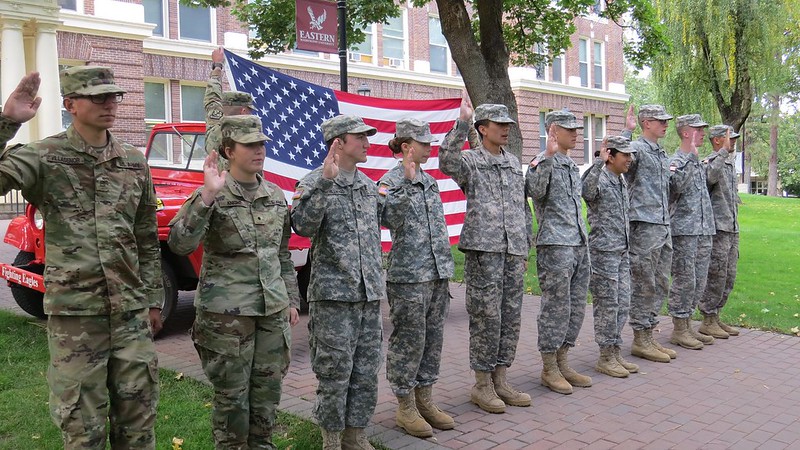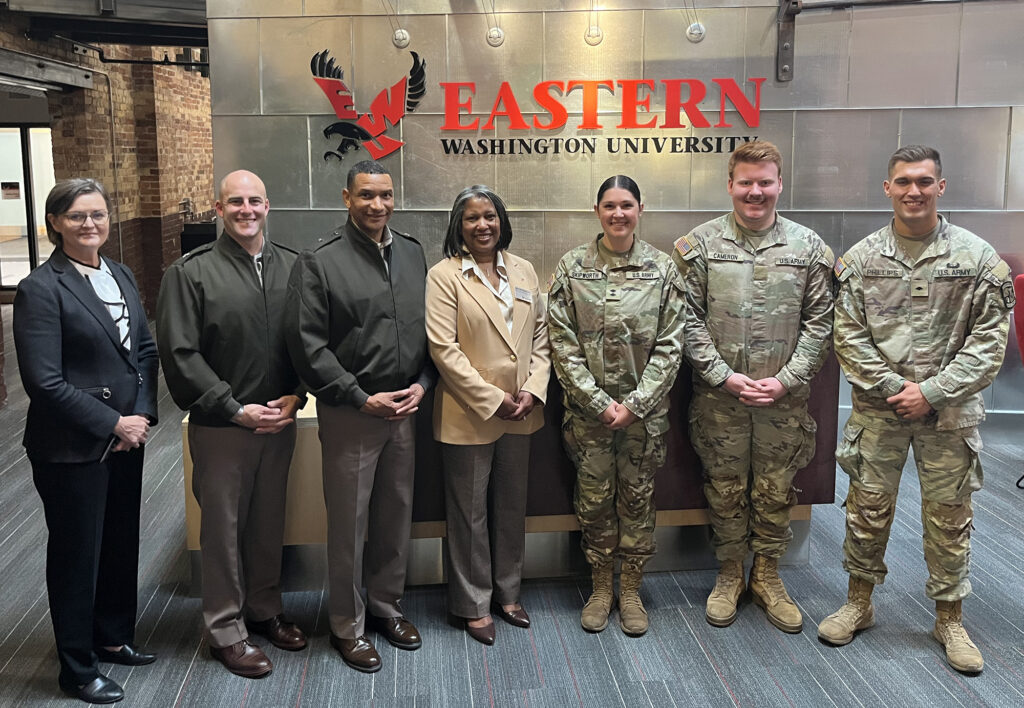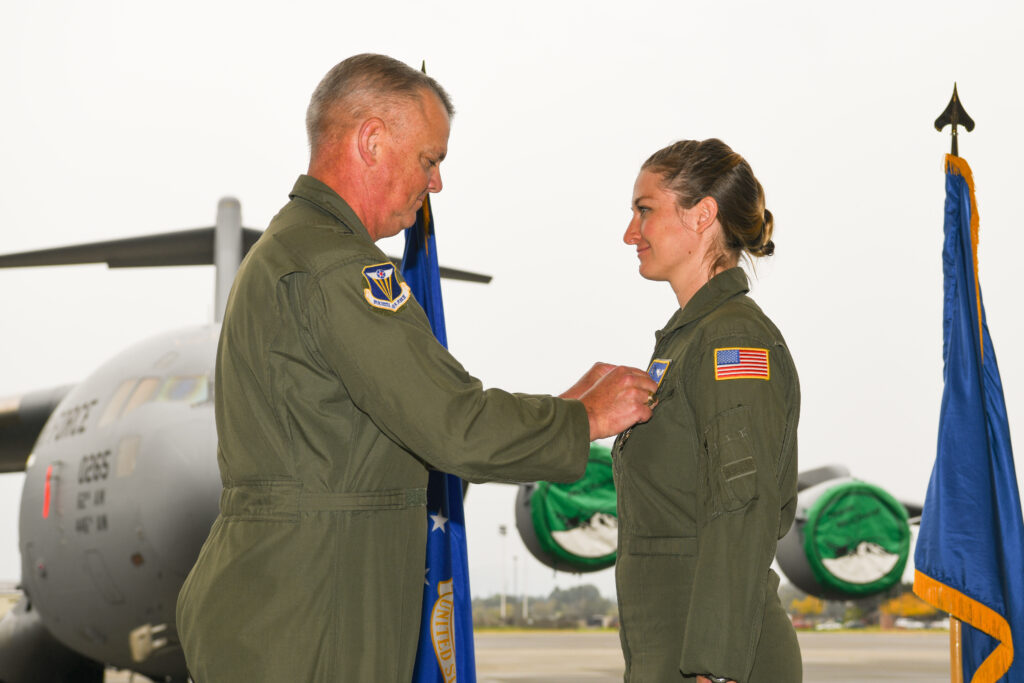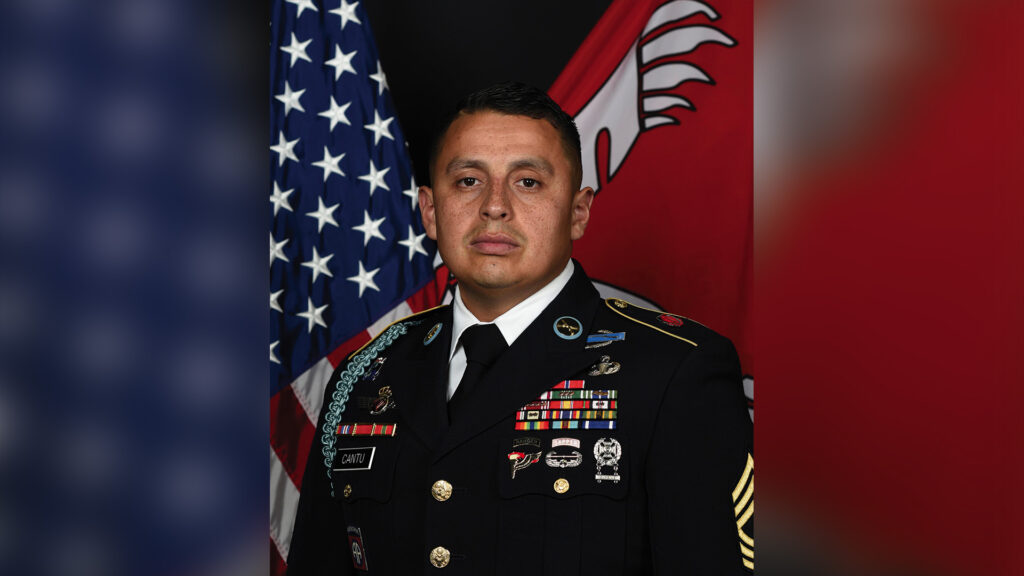About Us
Welcome to the Eastern Washington University (EWU) Reserve Officer Training Corps (ROTC) “Fighting Eagles” Battalion website. Since 1952 the EWU ROTC program has been training future leaders for our country with a curriculum in military leadership, both theoretical and practical. Students learn the fundamentals of leadership and progress through increasing roles and responsibilities in order to improve their proficiency. Many other life skills such as time management, oral and written communication, first aid and personal fitness, as well as adventure training, are also integrated into the program.







